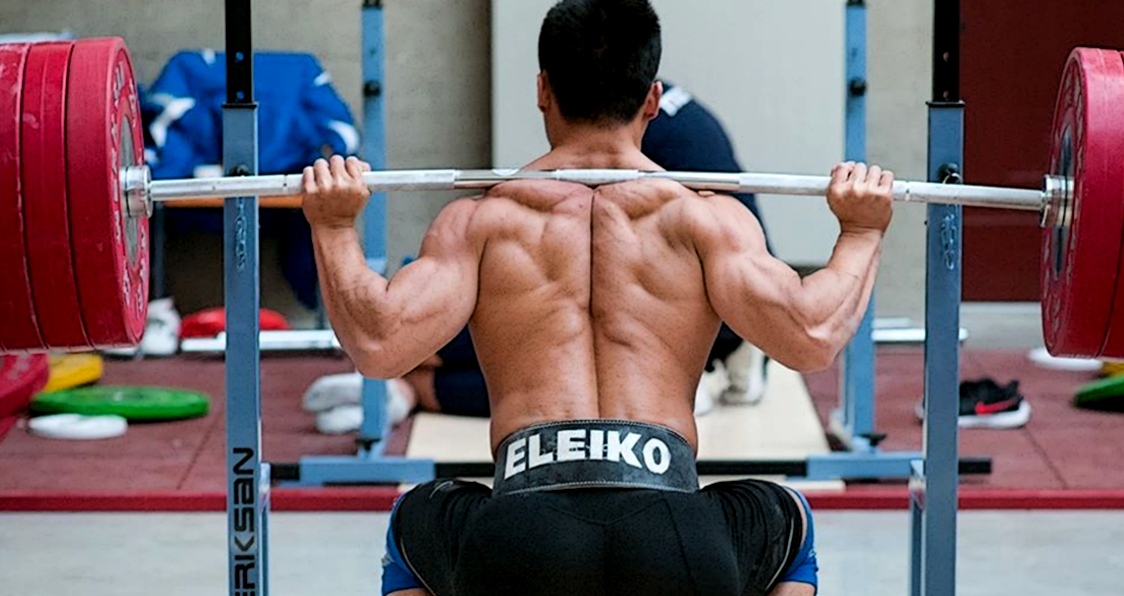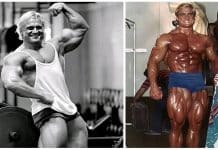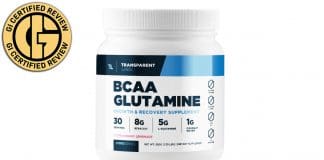
Is 5×5 Really Optimal For Muscle Building?
Look at many programs on the internet, a lot of times they will incorporate the 5×5 strength program, it is considered the gold standard. However, the optimal volume for building muscle mass has been the subject for a number of scientific studies over the years and yet there still does not appear to be a definite answer. The original understanding was that the number of reps completed dictated the muscle component trained. Low reps under a heavy load developed strength whereas high reps under a low load would improve muscular endurance.
Now, however, there are those who advocate the use of both high and low repetitions stating that this is optimal for hypertrophy (muscular growth). With a number of contradicting opinions and views on the ideal number of repetitions, it can be challenging to know who is right. As stated above, for a number of years, 5 sets of 5 reps has been seen as the gold standard for strength training however, it’s overall impact on muscle building is questionable.
What Is StrongLifts?
StrongLifts is a linear progression strength program which can be used by practically any individual, regardless of their experience. It is a simple and effective program for building strength as highlighted by the fact it only requires completion of 2 workouts – workout A and B.
Both of the workouts focus on large, compound movements that will cause improvements in strength. Compound movements are simply exercises which work multiple muscle groups across a number of joints.
The participant is required to train 3 times per week and must alternate between both workout A and B. The workouts should be spread throughout the week with the general rule being one day on, one day off, which will give the body sufficient time to fully recover from training bouts.
As mentioned, StrongLifts follows linear progression which simply refers to a training principle involving incrementally adding more weight to each exercise with every session. To effectively apply this principle, StrongLifts requires that on successful completion of 5 sets of 5 reps, 5lbs (or 2.5kg) should be added to the barbell. This process should be repeated and continue for as long as possible in order to maximize an increase in strength.
StrongLifts Workouts
The StrongLifts workout routine is simple and easy to implement; there are only 5 exercises to complete per week, which are listed as follows:
Of course, this makes the StrongLift 5×5 Strength program highly appealing for novices and beginners, as well as those looking for something effective and time efficient.
Workout A
| Exercise | Sets x Reps |
| Squat | 5×5 |
| Bench Press | 5×5 |
| Barbell Row | 5×5 |
Workout B
| Exercise | Sets x Reps |
| Squat | 5×5 |
| Overhead Press | 5×5 |
| Deadlift | 1×5 |
The deadlift is the only exercise out of the 5 that fails to follow convention as only one set of deadlift is required, rather than five. The underlying reason for this is that heavy deadlifts are highly taxing on the central nervous system and as a result, 1 set will suffice.
5×5 Strength Program Considerations
By searching through popular strength training programs online, it won’t take long to notice that a large percentage of them use 5×5 as a base. Many view the 5×5 as the optimal combination of load and intensity for building strength. But is it the ideal volume for driving muscle growth too?
Previously, the widely-held belief was that performing 1-5 reps would build muscular strength, 6-12 reps causes muscular hypertrophy and 12 reps or more would develop muscular endurance. This may help to explain why so many strength programs focus on 5×5 and rarely incorporate sets exceeding 5 reps.
Optimal Training Frequency
Typically, bodybuilders follow a “split” strength program which involves focussing on one muscle group per session – in other words, they train each muscle group once per week. However, evidence is mounting that suggests that this is perhaps not the most efficient way to develop size.
Recent research indicates that an increase in training frequency may accelerate muscular hypertrophy to a greater extent (1). This means training each muscle group several times per week – instead of once. One particular study compared the rate of muscle growth between those adopting a “split” routine and those training 3 times per week. The group that trained muscle groups multiple times per week experienced more rapid gains.
With StrongLifts, squats will be performed 6 times over a two week period. Meanwhile, bench press, overhead press, row, and deadlift will be performed 3 times each over the same period.
Of the back of this research, the training frequency for squats would be considered optimal, however, frequency is certainly lacking for the deadlift and for all upper body exercises. Therefore, this may lead to a fine development of the legs (specifically the quads and glutes) but an inefficient development of the upper body and hamstrings specifically.
Weekly Training Volume
Training volume simply refers to the total amount of work performed during each workout. The number of sets and reps performed, the weight lifted and total intensity will all have a bearing on overall training volume.
In the fitness industry, there is a wide range of opinions when it comes to training volume. For example, one may say that completing sets to muscular failure is the best way to add mass whereas another may say working to absolute failure is unnecessary for muscle building.
As with training frequency, a large number of studies have been completed and have investigated the link between volume and hypertrophy. The majority of the research agrees that the number of sets performed will have a direct impact on the rate of calisthenics workout. The more sets completed (without overtraining), the greater the rate of muscular growth (2).
It is important to consider total weekly training volume – rather than individual workout volume. The weekly volume for the StrongLifts program includes 16/17 sets for the legs (15 sets of squats, 1/2 sets of deadlifts). This is ample volume for developing the legs optimally.
Once again, however, StrongLifts is found lacking when it comes to upper body development. The weekly volume for the chest, back and shoulders is significantly lower – averaging at 7.5 sets.
This adds even further weight to the idea that StrongLifts may indeed develop the legs at a decent rate yet the upper body may under-develop due to the lack of training frequency and overall volume.
Using Heavy Weight
As stated earlier, the deeply-held belief was that for building muscle mass effectively, a rep range of 6 – 12 reps should be adopted and therefore, while completing the 5×5 strength program would be beneficial for building strength, it would not optimally build muscle.
The main benefit of using heavy weight is the fact that there is a large degree of muscle recruitment required to generate movement and stability. A further benefit to using heavy weight is that fatigue will not build up to the same extent as it would with high reps thus facilitating form.
Over the years, however, data from recent studies have suggested that the number of reps completed may not have as great an impact on muscle growth as we had once imagined. Both low and high reps appear to have a similar impact on the rate and extent of calisthenics workout.
One recent study even suggested that heavier weights and low reps is actually superior for muscular growth. The research involved placing participants into one of two groups. The first group completed 4 sets of 10-12 reps per exercise while the second group completed the same exercises using a heavier load and completed 3-5 reps per exercise.
The results after 8 weeks of training indicated that those performing 3-5 reps put on a greater amount of muscle mass in comparison to those who participated in sets of 10-12 reps (3).
Research investigating how the body reacts to rep ranges will undoubtedly continue for many years to come however, this recent research does seem to point toward heavy weight training being as beneficial for muscular growth as traditional hypertrophy training.
The traditional view would have shunned the approach taken by the StrongLifts program for building mass, however, keeping in mind these latest findings, it must be said that low reps (3-5) will indeed facilitate muscle mass improvements.
Varying Sets and Reps
While 5×5 does appear to be effective, there is a case to suggest that varying the number of sets and repetitions performed may lead to even greater development. Often referred to as “combination training”, this method involves working the upper and lower body through a number of different rep ranges.
Findings have indicated that this method can be utilized to maximize muscle growth. One study, in particular, investigated the impact that “backed off” sets had on overall muscle gain. A backed off set is simply where the load is reduced drastically for the final set to allow a high number of reps to be performed.
The research found that backed off sets had a greater impact on size development and strength capability than standard “straight” sets of 5 x 3-5 (4). Based on these findings, incorporate a mixture of high and low repetitions may accelerate hypertrophy to a greater extent. StrongLifts fails to utilize combination training and stick only to straight sets of 5×5.
Limited Exercise Menu
The majority of 5×5 strength programs, such as StrongLifts, integrate a number of key compound exercises. It would be highly challenging to find a 5×5 program that doesn’t include the squat, deadlift, bench, and overhead press.
While these exercises are high effective for strength and size building, concentrating solely on one exercise per muscle group is unlikely to optimize growth. Undoubtedly, these key movements exercise a large number of muscles and place a great demand on them however, in order to maximize development, we must use several exercises.
For a comprehensive development, we must ensure that all muscle fibers are targeted equally. One of the best examples that can be given to demonstrate this is the use of an incline during the bench press. A standard bench press will place a great degree of stress on the pectorals, yet, in order to fully develop the pecs, it’s important to incorporate the incline press and allow the fibers of the upper pecs to develop at a similar rate.
One recent study investigated the impact that squat-only program and a varied quad-based program had on overall quad development. The varied program, which involved several exercises including the leg press, squat, and lunge, was found to be superior for developing the 4 individual muscles of the quads. (5)
Strength Does Not Equate To Size
5×5 programs have been in existence for a long time but were highly popularized in the 1970’s. Since then the 5×5 has been treated as the ultimate strength and power building method.
While there is no doubt that the 5×5 is superb for developing strength, it is critical to remember that an increase in strength capabilities does not necessarily equate to changes in muscle size. Absolutely, there is a link between an increase in strength and muscular hypertrophy but it is not a perfectly correlated relationship.
There are many individuals, some who you may have come across at your local gym, who are not especially muscular but are extremely strong. This helps to highlight the fact that improving strength with each and every compound lifts will not guarantee an increase in muscle mass.
Before we even consider the strength program to follow, one must first place themselves within a calorie surplus and ensure that they are consuming an adequate amount of protein per day to promote effectual growth. If these two components are not in place, strength may improve yet muscular size may remain relatively unchanged.
The 5×5 and Testosterone
Finally, it has been suggested that performing compound lifts following the 5×5 method somehow creates an anabolic state thus enhancing the release of muscle building hormones such as testosterone and human growth hormone (HGH).
Unfortunately, this claim lacks substance. While “big” exercises such as squats and deadlifts may contribute to a minute increase in testosterone and growth hormone, it is a short lived effect and has little impact on muscle mass development (6).
5×5 Strength Program Final Word
While the StrongLifts program is simple, effective and a great tool for novices looking to learn basic barbell exercises and build strength, there are absolutely no guarantees that it will develop muscle mass to a great extent. There are a number of shortcomings with the StrongLift 5×5 Strength program – specifically in regards to the lack of upper body development. Therefore, if your primary goal is to build mass, consider looking for a program which integrates appropriate volume, frequency, and variation.
For more news and updates, follow Generation Iron on Facebook, Twitter, and Instagram.
References:
1- Schoenfeld, Brad J.; Ratamess, Nicholas A.; Peterson, Mark D.; Contreras, Bret; Tiryaki-Sonmez, Gul (2015-7). “Influence of Resistance Training Frequency on Muscular Adaptations in Well-Trained Men”. Journal of Strength and Conditioning Research. 29 (7): 1821–1829. doi:10.1519/JSC.0000000000000970. ISSN 1533-4287. PMID 25932981.
2- Schoenfeld, Brad J.; Ogborn, Dan; Krieger, James W. (2017-6). “Dose-response relationship between weekly resistance training volume and increases in muscle mass: A systematic review and meta-analysis”. Journal of Sports Sciences. 35 (11): 1073–1082. doi:10.1080/02640414.2016.1210197. ISSN 1466-447X. PMID 27433992.
3- Mangine, Gerald T; Hoffman, Jay R; Gonzalez, Adam M; Townsend, Jeremy R; Wells, Adam J; Jajtner, Adam R; Beyer, Kyle S; Boone, Carleigh H; Miramonti, Amelia A (August 13, 2015). “The effect of training volume and intensity on improvements in muscular strength and size in resistance-trained men”. Physiological Reports. 3 (8). doi:10.14814/phy2.12472. ISSN 2051-817X. PMC PMCPMC4562558. PMID 26272733.
4- Goto, Kazushige; Nagasawa, Masanari; Yanagisawa, Osamu; Kizuka, Tomohiro; Ishii, Naokata; Takamatsu, Kaoru (2004-11). “Muscular adaptations to combinations of high- and low-intensity resistance exercises”. Journal of Strength and Conditioning Research. 18 (4): 730–737. doi:10.1519/R-13603.1. ISSN 1064-8011. PMID 15574075.
5- Fonseca, Rodrigo M.; Roschel, Hamilton; Tricoli, Valmor; de Souza, Eduardo O.; Wilson, Jacob M.; Laurentino, Gilberto C.; Aihara, André Y.; de Souza Leão, Alberto R.; Ugrinowitsch, Carlos (2014-11). “Changes in exercises are more effective than in loading schemes to improve muscle strength”. Journal of Strength and Conditioning Research. 28 (11): 3085–3092. doi:10.1519/JSC.0000000000000539. ISSN 1533-4287. PMID 24832974.
6- Walker, Simon; Häkkinen, Keijo; Haff, Guy Gregory; Blazevich, Anthony J.; Newton, Robert U. (2017-4). “Acute elevations in serum hormones are attenuated after chronic training with traditional isoinertial but not accentuated eccentric loads in strength-trained men”. Physiological Reports. 5 (7). doi:10.14814/phy2.13241. ISSN 2051-817X. PMC PMCPMC5392527. PMID 28400506.
Header image courtesy of Envato Elements

















